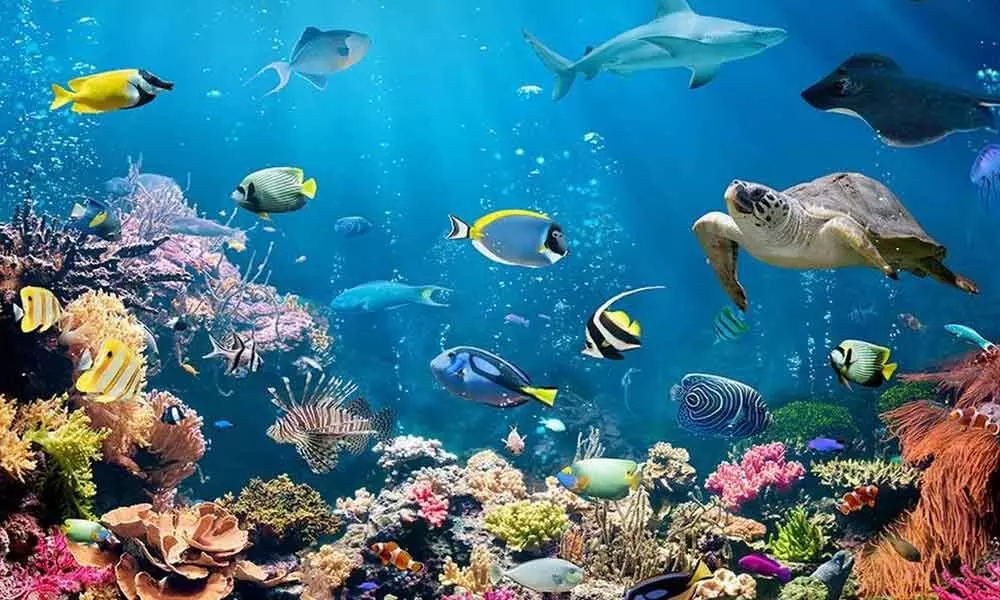Deep Ocean Mission to harness Blue Economy, explore seabeds

Deep Ocean Mission
With an aim to harness the Blue Economy, the 'Deep Ocean Mission' of the Ministry of Earth Sciences (MoES) was approved by the Cabinet six months ago envisaging exploration of deep ocean resources, especially Polymetallic Nodules, from 6000 m depth.
With an aim to harness the Blue Economy, the 'Deep Ocean Mission' of the Ministry of Earth Sciences (MoES) was approved by the Cabinet six months ago envisaging exploration of deep ocean resources, especially Polymetallic Nodules, from 6000 m depth. IANS caught up with MoES Secretary Dr M Ravichandran to know about the progress of the mission at an estimated cost of Rs 4,077 crore for the first five years. Excerpts:
Q: India has had the Department of Ocean Development since 1981-82 and about half a dozen organisations/institutions study the oceans in multiple aspects. What prompted the 'Deep Ocean Mission'?
In the 1980s, India envisaged two missions. One was a mission towards space and the other towards the ocean. While ISRO achieved greater heights, ocean missions meant mainly Antarctic and other explorations. Now, we are talking of the 'Blue Economy' coming from the ocean, starting with tourism and harnessing living and non-living resources among other things. However, we need to develop our own ocean technology just as we (ISRO) developed space technology. No other country will share it. Our main aim is to indigenously develop ocean technology to harness oceans without affecting the environment. The International Seabed Authority (ISA) ensures that we cannot touch a single point without documenting and showing what impact the exploration can have.
Q: What is the mission aiming to do?
The broad six verticals we are looking at are developing technologies for deep sea mining, development of ocean climate change advisory services, study and conservation of deep-sea biodiversity, deep ocean survey and exploration, energy and freshwater from the ocean, and advanced marine station for ocean biology.
By the way, no mining is happening now, it is at least 30 years away. Not just India, no country has the technology to go that deep, and the ISA code to explore and exploit the oceans is still evolving. Our objective is to look for the rare resource potential, non-living resource potential available and of that potential, how much is available without affecting the environment. The 'Deep Ocean Mission' is not for exploitation, but for exploration, during the 15-year time frame.
Q: You said, India plans to develop technology for deep sea mining on its own. What are the developments, what is the time frame for the first vessel?
Even the Navy submarines barely go a few hundred metres, max 500-600 metres below. That too, we are buying, we don't have our own technology, forget any technology to go that deep even just for exploration. A vessel for the mission will not be a problem, but what we are sending down a sphere. Five years later, we are looking at two things, one is an unmanned, robot-like thing, which will reach deep down and look at the seabed. Second, we are going for a manned mission, 6,000 metres below. It is the critical aspect of the 'Deep Ocean Mission'.
Q: When robots etc. are available, why a manned mission?
Why is India going for Mangalyaan or Gaganyaan? It is not that you are going to bring back something from there. Similarly, we are aiming to demonstrate we can also reach up to sea bottom, 6,000 metres. We are totally unaware of what exactly is there at 6,000 metres below deep into the ocean. (So), one reason is for science, and another is for technology. Science is yet to find out where life originates and how the living organisms have adapted? How is it able to adapt to that particular pressure? There are a lot many science-pushing subjects.
Q: Six months since the cabinet approved the Mission, what is the progress?
Work for all six verticals has started. First, National Institute of Ocean Technology (NIOT), Chennai, has fabricated a titanium-glass sphere that can go directly into the ocean at 6,000 metres. Trials will start with 500 metres. Second, National Centre for Polar and Ocean Research (NCPOR), Goa, is getting a new ship built in one of the shipyards in India. Third one is climate related. Most of the heat is at the top, up to 2,000 metres as per the information currently available. But actual heat is going below 2,000 metres. What is below that we don't know, we want to monitor that. Initially, Indian National Centre for Ocean Information Service (INCOIS), Hyderabad is buying and deploying technology while, parallelly, NIOT, Chennai is developing our own technology.
Fourth is, National Institute of Oceanography at Kochi is to study marine biodiversity and other things. Fifth one is to make clear water from the ocean water using the Ocean Thermal Energy Convertor (OTEC) that uses 20 degrees Celsius difference between two levels of oceans and does not need power for it. Then the last one is for biology, mainly capacity building. We want to build capacity across India for ocean biology and microbiology.
Q: Given the development imperatives that India faces, is it necessary to invest Rs 4,000 crore plus?
This is not a very big deal. Also always, when you don't have a science technology innovation, you will not have a good GDP. The ratio is directly proportional to investment in science, technology, and innovation. S&T will always fetch you (gains) in future. Aiming for low hanging fruits is not what S&T is meant for. We have to build social, environmental issues for the future.















